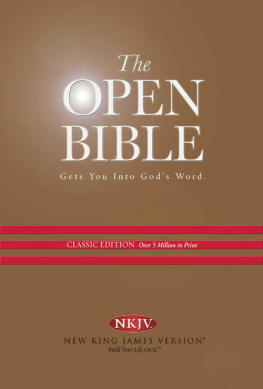Thomas Nelson - Holy Bible, New King James Version (NKJV)
Here you can read online Thomas Nelson - Holy Bible, New King James Version (NKJV) full text of the book (entire story) in english for free. Download pdf and epub, get meaning, cover and reviews about this ebook. year: 2009, publisher: Thomas Nelson, genre: Religion. Description of the work, (preface) as well as reviews are available. Best literature library LitArk.com created for fans of good reading and offers a wide selection of genres:
Romance novel
Science fiction
Adventure
Detective
Science
History
Home and family
Prose
Art
Politics
Computer
Non-fiction
Religion
Business
Children
Humor
Choose a favorite category and find really read worthwhile books. Enjoy immersion in the world of imagination, feel the emotions of the characters or learn something new for yourself, make an fascinating discovery.
- Book:Holy Bible, New King James Version (NKJV)
- Author:
- Publisher:Thomas Nelson
- Genre:
- Year:2009
- Rating:5 / 5
- Favourites:Add to favourites
- Your mark:
- 100
- 1
- 2
- 3
- 4
- 5
Holy Bible, New King James Version (NKJV): summary, description and annotation
We offer to read an annotation, description, summary or preface (depends on what the author of the book "Holy Bible, New King James Version (NKJV)" wrote himself). If you haven't found the necessary information about the book — write in the comments, we will try to find it.
Holy Bible, New King James Version (NKJV) — read online for free the complete book (whole text) full work
Below is the text of the book, divided by pages. System saving the place of the last page read, allows you to conveniently read the book "Holy Bible, New King James Version (NKJV)" online for free, without having to search again every time where you left off. Put a bookmark, and you can go to the page where you finished reading at any time.
Font size:
Interval:
Bookmark:
The Holy Bible New King James Version The Holy Bible New King James Version The Holy Bible, New King James Version Copyright 1982 by Thomas Nelson, Inc. The New King James Bible, New Testament Copyright 1979 by Thomas Nelson, Inc. The New King James Bible, Old Testament Copyright 1980 by Thomas Nelson, Inc. NKJV Logo: The triquetra (from a Latin word meaning three-cornered) is an ancient symbol for the Trinity. It comprises three interwoven arcs, distinct yet equal and inseparable, symbolizing that the Father, Son, and Holy Spirit are three distinct yet equal Persons and indivisibly One God. All Rights reserved The text of the New King James Version (NKJV) may be quoted or reprinted without prior written permission with the following qualifications: (1) up to and including 1,000 verses may be quoted in printed form as long as the verses quoted amount to less than 50% of a complete book of the Bible and make up less than 50% of the total work in which they are quoted; (2) all NKJV quotations must conform accurately to the NKJV text.
Any use of the NKJV text must include a proper acknowledgment as follows: Scripture taken from the New King James Version. Copyright 1979, 1980, 1982 by Thomas Nelson, inc. Used by permission. All rights reserved. However, when quotations from the NKJV text are used in church bulletins, orders of service, Sunday School lessons, church newsletters and similar works in the course of religious instruction or services at a place of worship or other religious assembly, the notice NKJV may be used at the end of each quotation. For quotation requests not covered by the above guidelines, write to Thomas Nelson Publishers, Bible Rights and Permissions, P.O.
Box 141000, Nashville, TN 37214-1000. Contents
Purpose In the preface to the 1611 edition, the translators of the Authorized Version, known popularly as the King James Bible, state that it was not their purpose to make a new translation but to make a good one better. Indebted to the earlier work of William Tyndale and others, they saw their best contribution to consist in revising and enhancing the excellence of the English versions which had sprung from the Reformation of the sixteenth century. In harmony with the purpose of the King James scholars, the translators and editors of the present work have not pursued a goal of innovation. They have perceived the Holy Bible, New King James Version, as a continuation of the labors of the earlier translators, thus unlocking for todays readers the spiritual treasures found especially in the Authorized Version of the Holy Scriptures. A Living Legacy For nearly four hundred years, and throughout several revisions of its English form, the King James Bible has been deeply revered among the English-speaking peoples of the world.
The precision of translation for which it is historically renowned, and its majesty of style, have enabled that monumental version of the word of God to become the mainspring of the religion, language, and legal foundations of our civilization. Although the Elizabethan period and our own era share in zeal for technical advance, the former period was more aggressively devoted to classical learning. Along with this awakened concern for the classics came a flourishing companion interest in the Scriptures, an interest that was enlivened by the conviction that the manuscripts were providentially handed down and were a trustworthy record of the inspired Word of God. The King James translators were committed to producing an English Bible that would be a precise translation, and by no means a paraphrase or a broadly approximate rendering. On the one hand, the scholars were almost as familiar with the original languages of the Bible as with their native English. On the other hand, their reverence for the divine Author and His Word assured a translation of the Scriptures in which only a principle of utmost accuracy could be accepted.
In 1786 Catholic scholar Alexander Geddes said of the King James Bible, If accuracy and strictest attention to the letter of the text be supposed to constitute an excellent version, this is of all versions the most excellent. George Bernard Shaw became a literary legend in our century because of his severe and often humorous criticisms of our most cherished values. Surprisingly, however, Shaw pays the following tribute to the scholars commissioned by King James: The translation was extraordinarily well done because to the translators what they were translating was not merely a curious collection of ancient books written by different authors in different stages of culture, but the Word of God divinely revealed through His chosen and expressly inspired scribes. In this conviction they carried out their work with boundless reverence and care and achieved a beautifully artistic result. History agrees with these estimates. Therefore, while seeking to unveil the excellent form of the traditional English Bible, special care has also been taken in the present edition to preserve the work of precision which is the legacy of the 1611 translators.
Complete Equivalence in Translation Where new translation has been necessary in the New King James Version, the most complete representation of the original has been rendered by considering the history of usage and etymology of words in their contexts. This principle of complete equivalence seeks to preserve all of the information in the text, while presenting it in good literary form. Dynamic equivalence, a recent procedure in Bible translation, commonly results in paraphrasing where a more literal rendering is needed to reflect a specific and vital sense. For example, complete equivalence truly renders the original text in expressions such as lifted her voice and wept (). Complete equivalence translates fully, in order to provide an English text that is both accurate and readable. In keeping with the principle of complete equivalence, it is the policy to translate interjections which are commonly omitted in modern language renderings of the Bible.
As an example, the interjection behold, in the older King James editions, continues to have a place in English usage, especially in dramatically calling attention to a spectacular scene, or an event of profound importance such as the Immanuel prophecy of . Consequently, behold is retained for these occasions in the present edition. However, the Hebrew and Greek originals for this word can be translated variously, depending on the circumstances in the passage. Therefore, in addition to behold, words such as indeed, look, see, and surely are also rendered to convey the appropriate sense suggested by the context in each case. In faithfulness to God and to our readers, it was deemed appropriate that all participating scholars sign a statement affirming their belief in the verbal and plenary inspiration of Scripture, and in the inerrancy of the original autographs. Devotional Quality The King James scholars readily appreciated the intrinsic beauty of divine revelation.
They accordingly disciplined their talents to render well-chosen English words of their time, as well as a graceful, often musical arrangement of language, which has stirred the hearts of Bible readers through the years. The translators, the committees, and the editors of the present edition, while sensitive to the late-twentieth-century English idiom, and while adhering faithfully to the Hebrew, Aramaic, and Greek texts, have sought to maintain those lyrical and devotional qualities that are so highly regarded in the Authorized Version. This devotional quality is especially apparent in the poetic and prophetic books, although even the relatively plain style of the Gospels and Epistles cannot strictly be likened, as sometimes suggested, to modern newspaper style. The Koine Greek of the New Testament is influenced by the Hebrew background of the writers, for whom even the gospel narratives were not merely flat utterance, but often sung in various degrees of rhythm. The Style Students of the Bible applaud the timeless devotional character of our historic Bible. Yet it is also universally understood that our language, like all living languages, has undergone profound change since 1611.
Next pageFont size:
Interval:
Bookmark:
Similar books «Holy Bible, New King James Version (NKJV)»
Look at similar books to Holy Bible, New King James Version (NKJV). We have selected literature similar in name and meaning in the hope of providing readers with more options to find new, interesting, not yet read works.
Discussion, reviews of the book Holy Bible, New King James Version (NKJV) and just readers' own opinions. Leave your comments, write what you think about the work, its meaning or the main characters. Specify what exactly you liked and what you didn't like, and why you think so.

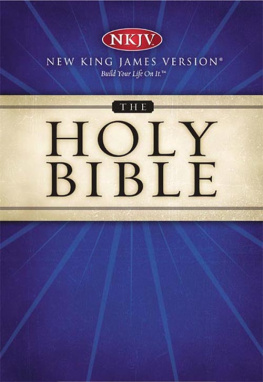
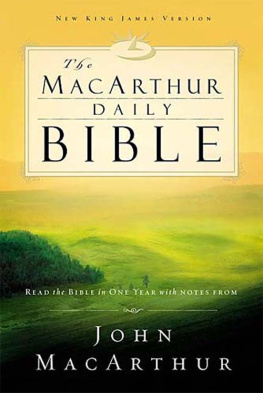
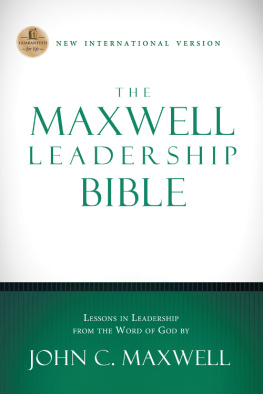
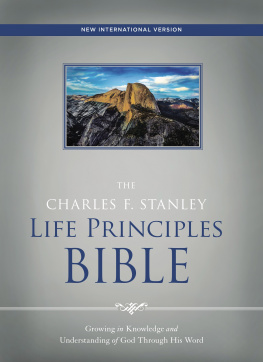
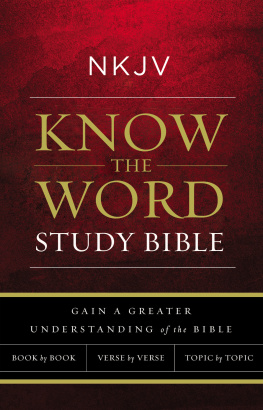
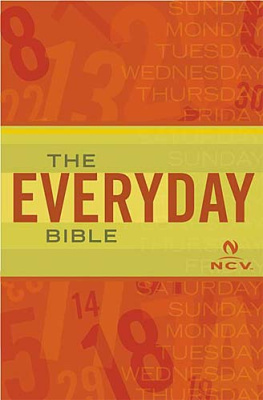

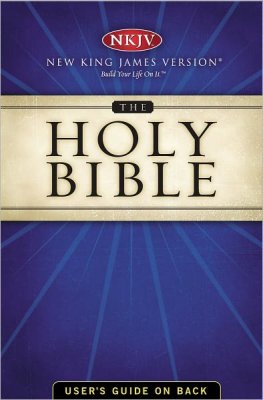


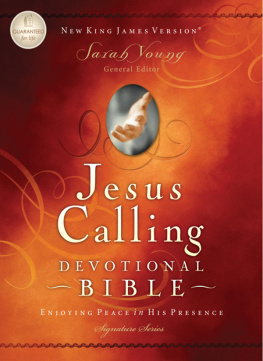
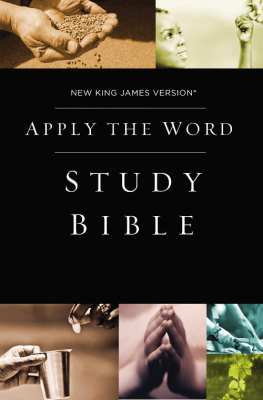
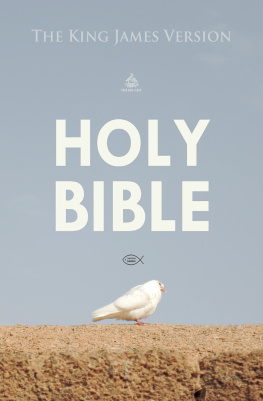
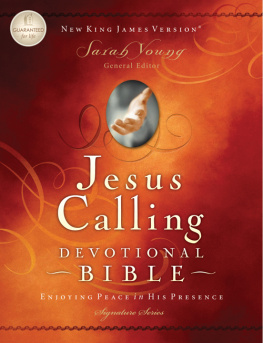
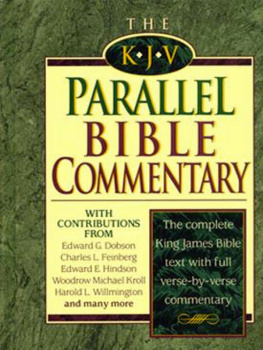
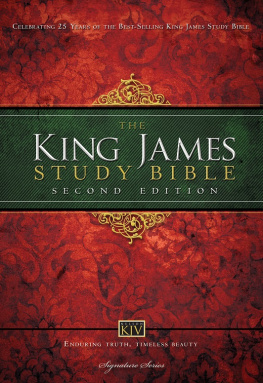
![Thomas Nelson - The NKJV Study Bible [Full-Color Edition]](/uploads/posts/book/79115/thumbs/thomas-nelson-the-nkjv-study-bible-full-color.jpg)
